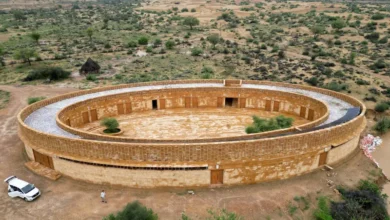New Amsterdam, then New York, and now new Venice?

A study published earlier this month shows that, due to the collective weight of all of its buildings, New York is sinking.
The sea level has been rising rapidly over the years and is predicted to reach between 20 and 70 centimeters by the year 2050. Researchers have calculated the weight of the 1,084,954 buildings across the city and came to the conclusion that the collective mass of the city skyscrapers roughly rounded up to 762 billion kilograms.
Tom Parsons, a research geophysicist at the US Geological Survey and lead study author, said that “We’ve had a couple of major hurricane events with Sandy and Ida in New York where heavy rainfall caused inundation in the city, and some of the effects of urbanization have allowed water to come in.”
The research team matched satellite data to a simulation model to analyze the effect of the massive weight on the ground. “The average is about 1 to 2 millimeters per year, with some areas experiencing up to 4 and a half millimeters per year,” Parsons added.
According to the study, some parts of Queens, Lower Manhattan, and Brooklyn are among the parts of the city which are on faster sinking rates than others. The city is considered to be one of the most densely inhabited coastal cities in the world.
However, Parsons said that not all sinking is to be blamed on the skyscrapers’ weight. “We could see some correspondence where there’s construction on very soft soils and artificial fill,” “In other places, we see subsidence that’s difficult to explain,” Parsons said.
Subsidence is the technical word for the sinking or settling of the Earth’s surface caused by natural or man-made factors. It can impose a greater and faster flooding threat than the rise of sea levels.
In September 1889, what is thought to be New York’s first skyscraper was built, an 11-storey building on Broadway, with a steel skeleton structure. Its establishment was the starting point for a construction spree that has yet to stop.
Some people say that at this rate, New York is becoming the new Venice of America since the Italian city has been suffering from subsidence for years. The earth beneath it has steadily compacted over time after being built on a muddy lagoon with weak foundations. This, together with groundwater pumping from beneath the city and a slow rise in sea levels, has resulted in Venice steadily sinking.
Other cities around the world are suffering from the same issue. Jakarta, the capital city of Indonesia, is also rapidly sinking to the point where the government is planning to build another capital city elsewhere.










